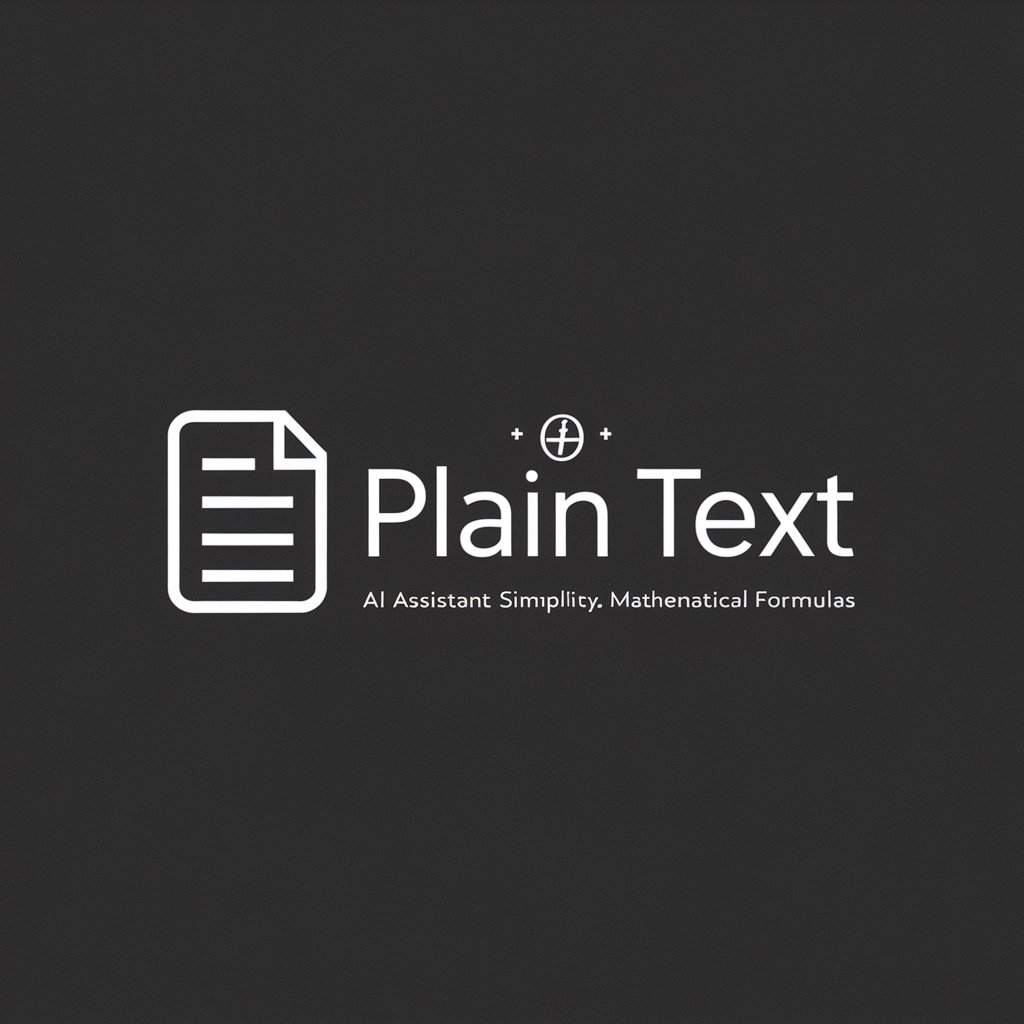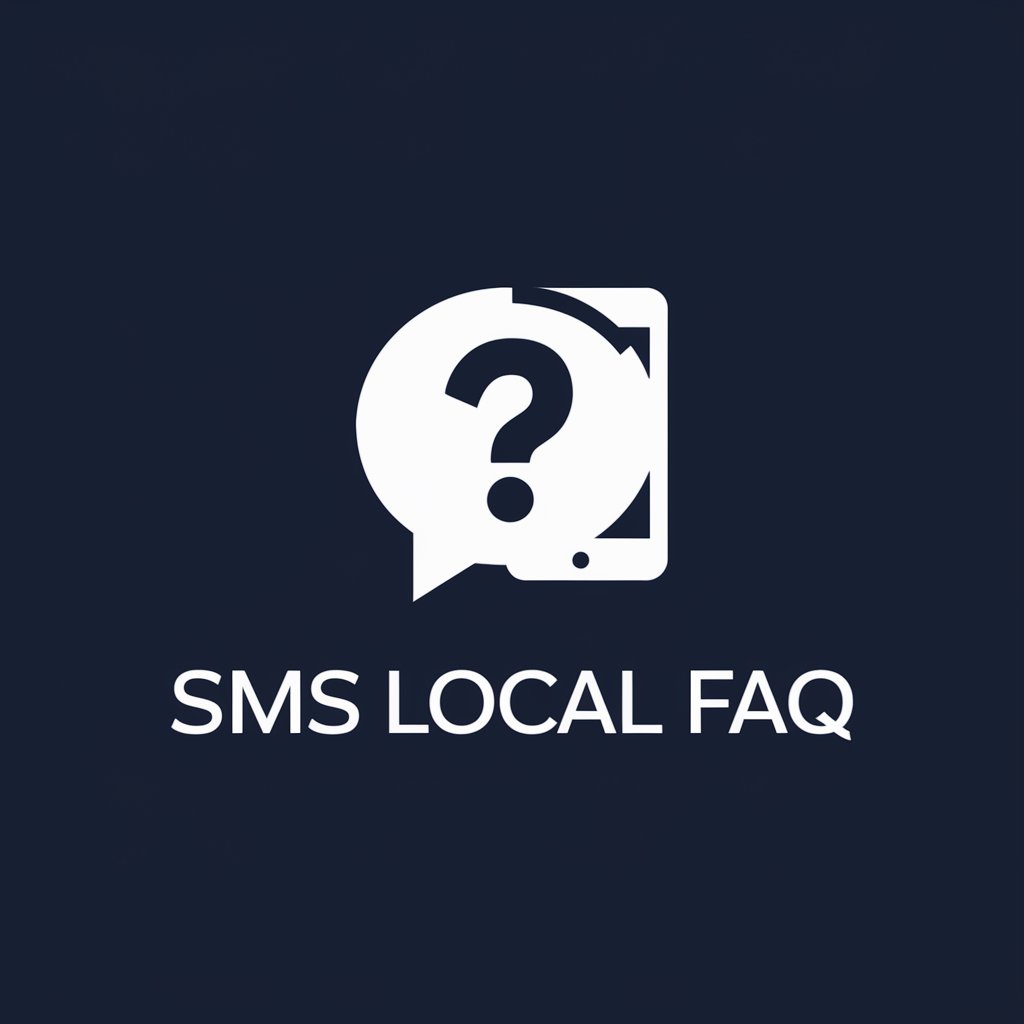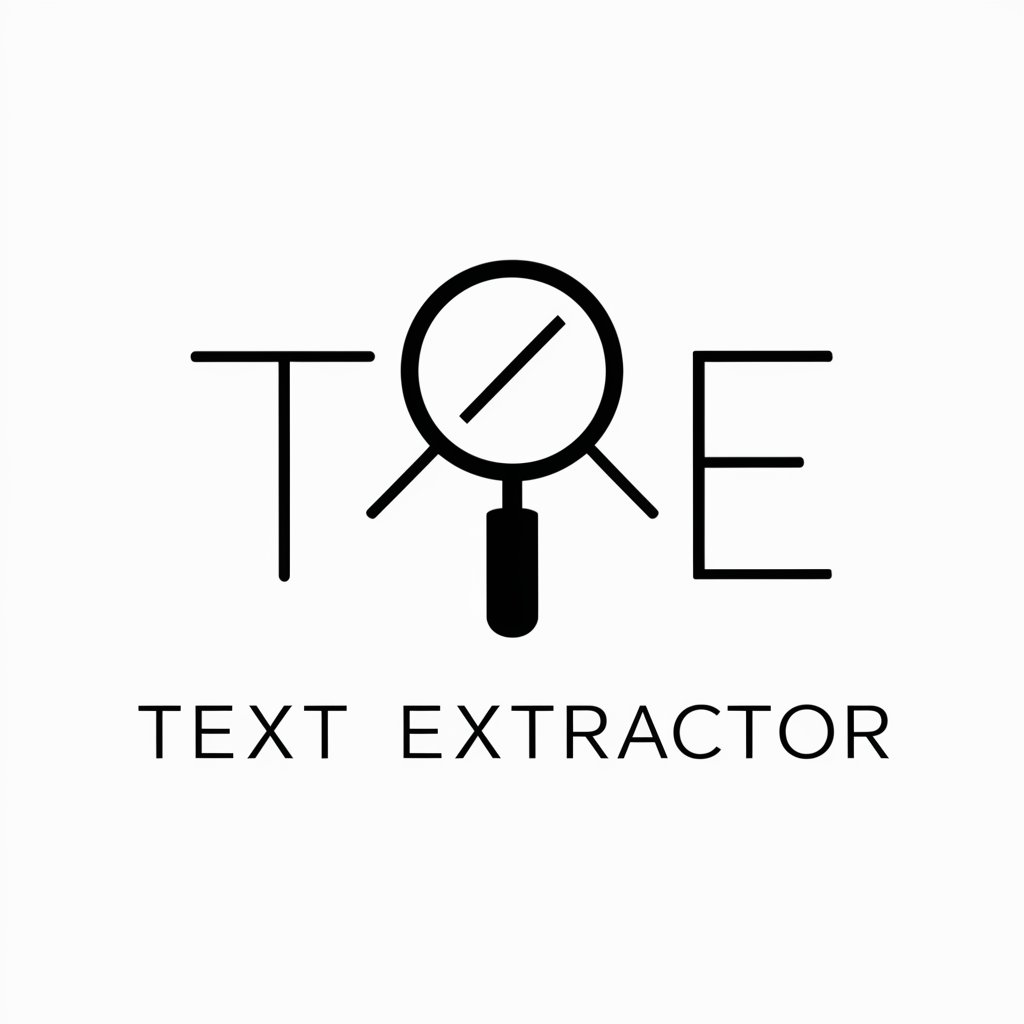
Plain Text - Math to Text Conversion

Welcome! How can I assist with your text conversions today?
Simplify math with AI-powered text conversion.
Convert the following formula into plain text:
Rewrite this mathematical expression for word processing:
Simplify the following equation using basic text representation:
Transform this complex mathematical content into a readable format:
Get Embed Code
Overview of Plain Text
Plain Text is designed to facilitate the conversion of mathematical formulas and expressions into a simple, plain text format. This service is particularly useful for individuals who need to input complex mathematical content into environments that do not support standard mathematical notation or specialized formatting, such as basic text editors or word processing software like Microsoft Word. The primary function involves translating symbols and mathematical operations into a text-based representation that is universally understandable without the need for specialized software. For example, the mathematical expression for the quadratic formula, traditionally written with square root symbols and fractions, is converted into a format using '^' for powers, '/' for division, and plain language to describe operations, making it accessible in any text processing context. Powered by ChatGPT-4o。

Key Functions of Plain Text
Conversion of mathematical symbols to text
Example
The mathematical expression 'x^2 + 3x + 2 = 0' remains unchanged as it already uses plain text symbols.
Scenario
Useful in drafting emails that contain mathematical content where symbols like '^' for powers and '=' for equations are used instead of graphical representations.
Describing mathematical operations in words
Example
The square root of x can be written as 'sqrt(x)' or described as 'the square root of x'.
Scenario
Beneficial for writing math problems in forums or chat applications where LaTeX or other mathematical formatting is not supported.
Translating complex formulas into readable text
Example
The formula for the area of a circle, traditionally written as 'πr^2', is translated to 'pi times the radius squared'.
Scenario
Useful for creating instructional materials or textbooks where mathematical expressions need to be fully explained in text.
Target Users of Plain Text
Educators and Students
Individuals in educational settings who often need to communicate complex mathematical ideas in simple text formats for assignments, research papers, or instructional materials. Plain Text allows them to accurately convey these concepts in environments that might not support mathematical notation.
Professionals
This includes scientists, engineers, and other professionals who need to include mathematical content in documentation, emails, or presentations without relying on specialized software. Plain Text enables clear communication of mathematical ideas using basic text.
Content Creators
Writers and bloggers focusing on educational or technical content who need to integrate mathematical expressions into their texts in a way that's accessible to readers without mathematical backgrounds. Plain Text assists in breaking down complex formulas into understandable language.

How to Use Plain Text
Start with a Free Trial
Access Plain Text by visiting a designated website, offering a trial without the need for login or subscription to premium services.
Understand the Basics
Familiarize yourself with the conversion capabilities of Plain Text, including changing mathematical formulas into a text-readable format.
Prepare Your Content
Gather the mathematical expressions or formulas you need to convert into plain text, ensuring clarity and simplicity in their presentation.
Use the Conversion Tool
Input your mathematical content into the Plain Text interface and execute the conversion process to obtain the plain text version.
Review and Edit
Check the converted text for accuracy and make any necessary adjustments to ensure it meets your requirements before finalizing.
Try other advanced and practical GPTs
Sales Text Manager
Craft Persuasive Sales Texts Instantly

SMS LOCAL FAQ
Instantly generate FAQs with AI power.

Text Rewriter
Revolutionizing Writing with AI

Text Extractor
Unlock Text from Images with AI

Text Polisher
Empower Your Writing with AI

Doctor Assistant
Empowering Medical Insight with AI

AI Detective
Elevating Content with AI Precision

Harmony Guide
Elevate your music, elevate your spirit.

Better Music - PLP Copywriter
Elevate Your Music Content with AI

AI Insight
Empowering decisions with AI insights

News AggreGator
Stay informed with AI-powered news summaries.

Superdomain
Craft the perfect domain with AI

Frequently Asked Questions about Plain Text
What is Plain Text primarily used for?
Plain Text is designed to convert complex mathematical formulas into a simple, plain text format, making it ideal for use in word processing software where advanced formatting is not available.
Can Plain Text handle equations with special symbols?
Yes, Plain Text can convert equations containing special symbols by representing these symbols with plain text equivalents, ensuring readability across various platforms.
Is Plain Text suitable for academic writing?
Absolutely, Plain Text is highly suitable for academic writing, especially when dealing with mathematical expressions in documents that do not support LaTeX or other specialized formatting.
How accurate is the conversion process?
The conversion process aims for high accuracy, but users are encouraged to review the converted text to ensure it accurately represents the original mathematical expressions.
Can I use Plain Text for collaborative projects?
Yes, Plain Text's simple, plain text output is ideal for collaborative projects, as it ensures that mathematical content is accessible and understandable to all participants, regardless of their technical setup.





